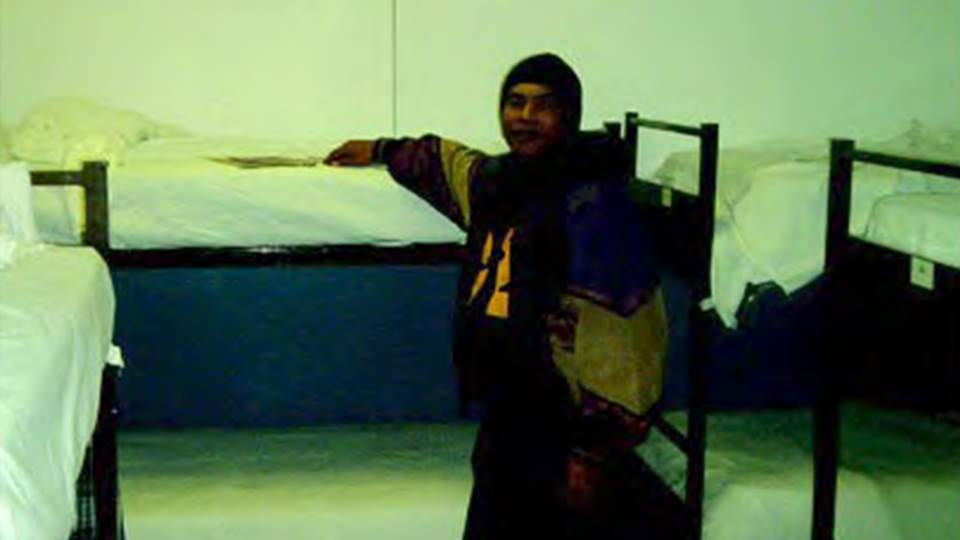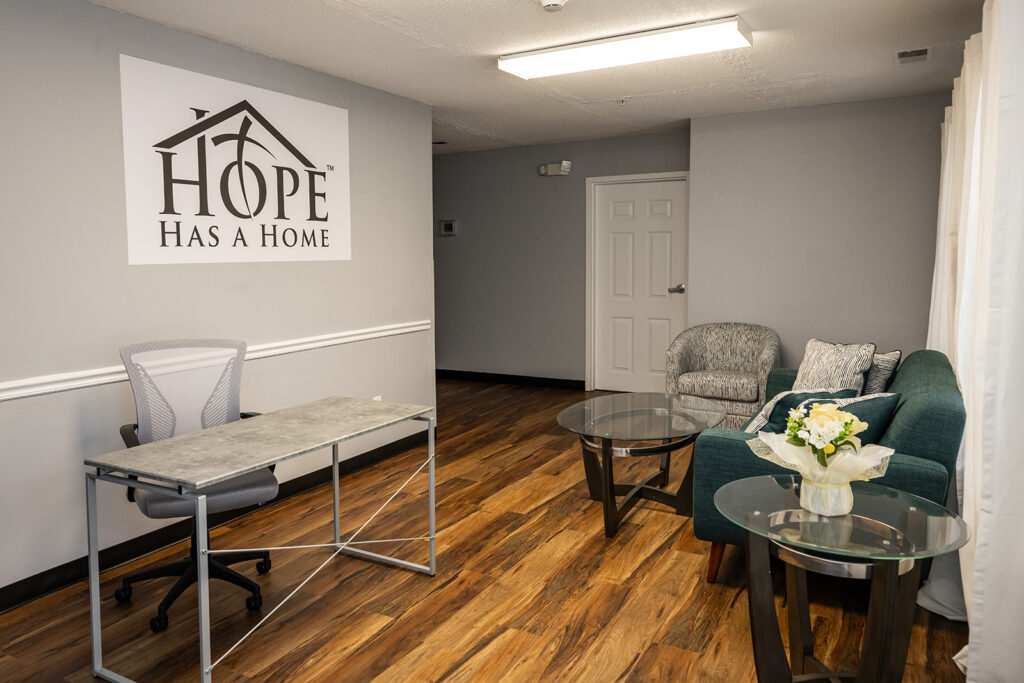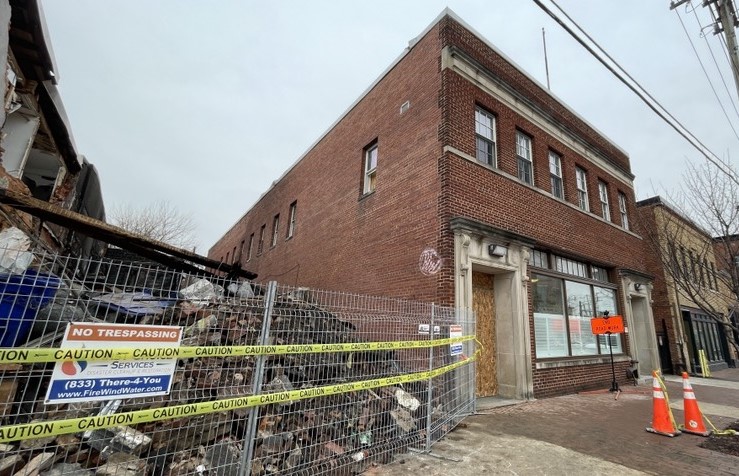Some of the first residents of the new shelter on New York Avenue, NE believe they have found more than a place to protect them from the cold: they think they have found hope.
“This is hope,” said Robert Taylor, a 56-year-old homeless man. “We were in a state of hopelessness just a few weeks ago. This is…recovery.”
Tony Woods, a 50-year-old man who has been homeless off and on for years, agreed. “I need places like this to get me straight.”
But though the District’s newest facility for homeless people, at 1355-57 New York Ave., NE, opened Dec. 19 with fanfare by city officials, it was quickly greeted with questions from homeless people and their advocates about the location of the center and the status of other shelters.
The city promptly answered the Gales School question, saying that the emergency hypothermia facility at 65 Massachusetts Ave., NW would remain open for the winter. The shelter there was supposed to close Dec. 19, with its residents moving to the New York Avenue site. However, city officials still intend to close the facility for renovations when temperatures rise again at the end of March.
Gales School was opened in 2001 as a temporary facility, said Lynn French, a senior policy advisor in the Deputy Mayor’s Office for Children, Youth, Families, and Elders. “It was always temporary,” she explained, adding that the city has other plans for the former schoolhouse.
The second question – why the new shelter is so far from downtown – is a little tougher to answer, French said. “Our goal is to have things as close to downtown as we can but we need safe and good places for people to live.”
The other issue, of course, is money. Real estate in the central downtown area is phenomenally expensive, French said. If the city does not already own a parcel, it must buy one, and it is often difficult to find structures that will suit the city’s needs. Further complicating the matter, French explained, is that whenever she publicly expresses interest in a location, speculators jump on it.
While praising the new shelter, Chapman Todd of Catholic Charities says it is still not “a substitute for a low-barrier facility downtown.” Though the city owns the New York Avenue Shelter, Catholic Charities runs it along with a handful of other sites.
“It’s an on-going issue about the location,” Todd said. “It’s a great-looking facility, but it’s not downtown.”
Back at New York Avenue, Woods does not think the shelter’s location is that great an inconvenience. “You can walk downtown. It’s really not that far. If you have the money, the bus is right here.” And the shelter provides a bus in the mornings that takes clients to First and P streets in Northwest, where So Others May Eat’s (SOME) breakfast program is located, Woods said.
Finally, the city’s hypothermia van will bring men to the shelter in the evenings. Word is quickly spreading about the 200-bed facility located right in front of Dream, an enormous posh nightclub. Woods said occupancy has doubled since he first arrived January 2.
Stephen Prue, a program coordinator for Catholic Charities who works at the shelter, supported that assertion, saying that 147 men stayed in the shelter the night of Jan. 7. He predicted they would soon reach capacity.
Right now the shelter is serving as a lo-barrier shelter, meaning that clients do not have to visit a caseworker and are not screened – other than for weapons and drugs – upon entering, Todd said.
Eventually the city wants the site to be a model of what other new shelters in the District will look like, French said. It is to be a homeless assistance center. The first level of response – giving men shelter – is already there, but clients will also have access to additional services, such as psychiatric care and job training. Social service workers and health care providers already have offices in the shelter, and a job board has been posted, listing several opportunities.
Homeless people “need better places to live and help the transition into independent living,” French said.
The shelter has dormitory-style bunk beds for emergency use, as well as special rooms designated for “working men,” employed homeless men. They live two to a room and are allowed to personalize their surroundings and leave their possessions.
One meal is served in the large cafeteria at 7:30 p.m. But both the kitchen and laundry room provide more services.
The kitchen is suitable for commercial use, and eventually men will learn how to cook in there and will be prepared for food service jobs, she said. There are also laundry facilities where the men can wash their own clothes. The laundry area is split into two with a separate, industrial area that the city can use to clean linens for all of its shelters. French said men would be trained to work in that area as well.
“The facility is great,” Woods said. “I’ve stayed in others where there weren’t any showers or working bathrooms. It’s clean, you can have a warm shower and you can get your same bed every night if you come back by a certain time.”
Additionally, men who volunteer to keep the shelter clean by helping out with mopping, sweeping, and other household duties can leave their belongings, he said.
“It’s the place to be if you got to be here,” he added.
Taylor is just as happy with his accommodations. “I’ve never seen anything like it,” he said. “You can help out and stay in; some people have already found jobs. The programs here are like one-stop shopping.”
“It’s designed to get you to independent living,” he said, showing excitement about the prospects, although he knows not everything is in place yet.
“You just have to be patient,” he concluded.
French says that the New York Avenue shelter is just the beginning for the District. Plans are underway to replace La Casa with a “state of the art” facility at 14th and Irving streets in Northwest. A women’s facility is being erected at the edge of downtown on New Jersey Avenue too, she said, not wanting to reveal more details for fear of the property being snapped up by someone else.
Within 10 years the District plans to have 6,000 units for the homeless – half for singles and half for families – French said, adding that New York Avenue is just the down payment toward that goal.








